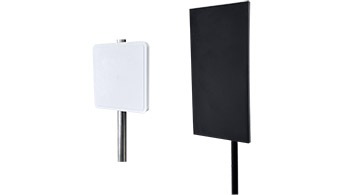Hey there! If you’ve ever dipped your toes into the world of RFID, you know the antenna is a make-or-break component. I remember my first RFID project; I was so focused on the readers and tags that I almost overlooked the antenna. Big mistake. Choosing between a wide beamwidth and a narrow beamwidth antenna can dramatically change your results.
A wide beamwidth RFID antenna casts a broad, floodlight-like signal, ideal for covering large areas. A narrow beamwidth antenna creates a focused, spotlight-like signal for long-distance, targeted reads. The choice depends on your specific application’s coverage and range needs.
Ready to dive deeper? I’m going to break down everything you need to know about wide and narrow beamwidth antennas to help you pick the perfect one for your project.
What exactly is RFID Antenna Beamwidth?
Before we pit wide against narrow, let’s get on the same page about what beamwidth actually is. Think of an RFID antenna’s signal like the light from a flashlight. The “beamwidth” is simply the angle of the cone of energy the antenna emits. This is where the antenna is most effective at powering tags and receiving their signals back.
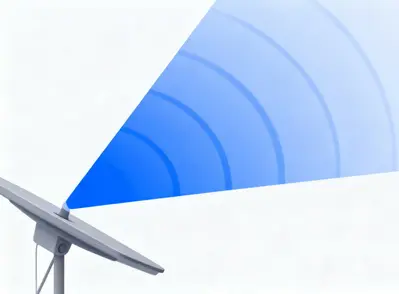
This beam has two dimensions:
- Azimuth (Horizontal): The side-to-side coverage.
- Elevation (Vertical): The up-and-down coverage.
The beamwidth is measured in degrees at the point where the signal strength is half of its maximum power (-3dB). A wider angle means a wider coverage area, while a smaller angle means a more focused, targeted beam. It’s a crucial factor that influences both your read range and coverage zone.
The Trade-Off: Gain vs. Beamwidth
You can’t talk about beamwidth without mentioning “gain”. Gain, measured in decibels isotropic (dBi), is the antenna’s ability to direct or concentrate radio frequency energy in a particular direction.
Here’s the golden rule: “Higher gain equals a narrower beamwidth, and lower gain equals a wider beamwidth”.
Imagine you have a fixed amount of power from your RFID reader.

A “high-gain antenna” acts like a megaphone, focusing that power into a tight, long-distance beam. This gives you a longer read range but a smaller, more precise coverage area.
A “low-gain antenna” is more like a floodlight, spreading the power over a much wider area. Your read range will be shorter, but you’ll cover a much broader zone without needing extra antennas.
Understanding this trade-off is the key to choosing the right antenna. Do you need to read tags from far away in a specific spot, or do you need to blanket a large area with RF energy?
All About Wide Beamwidth Antennas
Wide beamwidth antennas are the go-to choice when you need to cover a large, sprawling area and the read distance isn’t your primary concern.
Characteristics of a Wide Beamwidth Antenna:
- Low Gain: These antennas typically have a lower dBi rating.
- Broad Coverage: They have a wide radiation pattern, sometimes looking like a sphere or donut.
- Shorter Read Range: Because the energy is spread out, the read distance is shorter compared to a narrow beam antenna with the same power.
When to Use a Wide Beamwidth Antenna:
Think of situations where tagged items are spread out or their orientation is unpredictable.
Portal Doorways: At a dock door or entrance, you want to read every tag on a pallet as it passes through, regardless of where it is on the pallet. A wide beam ensures you don’t miss anything.
Smart Shelves and Cabinets: In retail or for tool tracking, you need to monitor all the items on a shelf. A wide beam can cover the entire surface area.
Zone Coverage: If you need to track assets within a specific room or defined area, a wide beam antenna can provide the necessary blanket coverage.
I once worked on a project for a library using wide beam antennas at the checkout desk. We needed to read multiple books at once, no matter how they were stacked. A narrow beam would have missed half of them, but the wide beamwidth antenna worked perfectly.
Pros of Wide Beamwidth
- Excellent for covering large, open areas.
- Reduces the need for multiple antennas, which can save costs.
- Great for applications where tags are at various angles and positions.
Cons of Wide Beamwidth:
- Shorter read range.
- Can lead to stray reads—reading tags outside of your desired zone.
- Higher potential for interference in crowded RF environments.
Diving into Narrow Beamwidth Antennas
When your goal is precision and distance, the narrow beamwidth antenna is your best friend. It’s all about focusing the energy for maximum impact in a specific spot.
Characteristics of a Narrow Beamwidth Antenna
High Gain: These antennas have a higher dBi rating, which translates to a more powerful, concentrated signal.
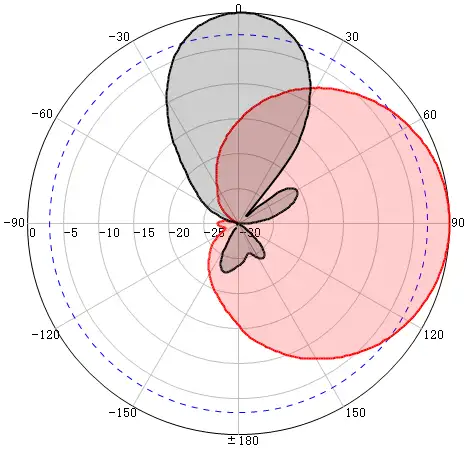
Focused Beam: The RF energy is channeled into a tight, spotlight-like beam.
Longer Read Range: By concentrating the power, these antennas can read tags from much further away.
When to Use a Narrow Beamwidth Antenna
You’ll want to go with a narrow beamwidth antenna when you know exactly where your tags or targets are going to be, and you need to pick them up from a distance—without grabbing a bunch of unwanted reads from the surroundings.
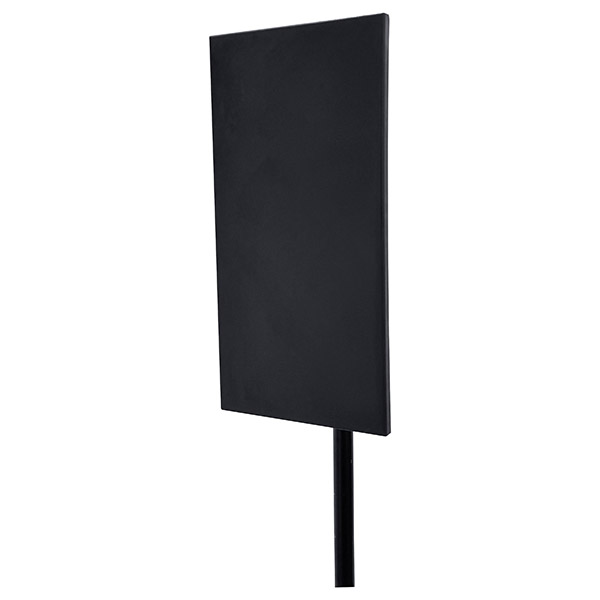
Conveyor Belts: In factories or logistics centers, items move in a straight, predictable line. Here, a narrow beam antenna is ideal for zeroing in on each item as it passes by, making sure you only read what you want.
Long-Range Vehicle Tracking: Think toll booths or fleet entrances. When vehicles approach from far away, a narrow beam antenna can accurately read the tag on each car or truck, even at high speeds. This is exactly how ETC (Electronic Toll Collection) systems work on freeways—they rely on focused antennas to pick up each vehicle’s tag as it zooms through the toll plaza.
Warehouse Aisles: If you’re trying to read tags on pallets stacked high up on racks, you don’t want stray signals picking up tags from every direction. A narrow beam lets you aim precisely down an aisle, so you only get the reads you need.
Loading Docks and Gates: At entry and exit points, you can use a narrow beam antenna to track exactly which items or vehicles are coming or going, without accidentally reading tags from things nearby.
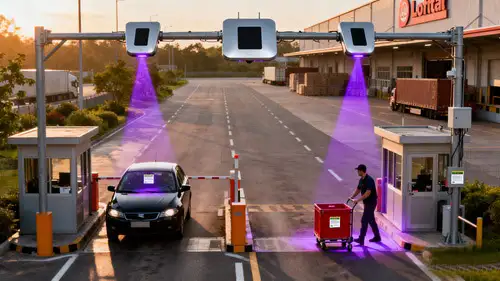
Construction Yards: I remember one project in a huge construction yard where we needed to track specific tools. We set up narrow beamwidth Yagi antennas and could easily identify the right equipment from over 15 meters away. If we’d used a wide beam, we’d have picked up way too much noise—but the focused beam made it work perfectly.
Parking Lots: For access control in parking garages or lots, a narrow beam antenna ensures you only read the tag of the vehicle entering or leaving, not cars parked nearby.
So, whenever you need that extra precision—whether it’s on the freeway, in a warehouse, or out in the field—a narrow beamwidth antenna is the way to go, yeah?
Pros of Narrow Beamwidth:
- Excellent for long-distance reads.
- Highly accurate and precise, reducing the chance of stray reads.
- Performs well in environments where you need to isolate specific read zones.
Cons of Narrow Beamwidth:
- Covers a very small area, often requiring multiple antennas for wider coverage.
- Can be difficult to aim and position correctly.
- Not suitable for applications where tags are in unpredictable locations.
The Final Showdown: How to Choose
So, how do you make the final call? It really comes down to a few key questions about your specific application:
1. What is my required read zone? Do you need to cover a wide area like a doorway, or a long, narrow path like a conveyor belt? The shape of your read zone is the biggest clue.
2. How far away are the tags? If you need to read tags from several meters away, a high-gain, narrow beamwidth antenna is likely your best bet. For close-proximity reads, a wide beamwidth antenna will do the job.
3. Are the tags in a fixed or variable orientation? While polarization is a separate topic, beamwidth plays a role. If tags are in unpredictable positions, a wider beam gives you a better chance of hitting them.

4. What’s the environment like? In a crowded RF environment with lots of metal or other antennas, a narrow, focused beam can help reduce interference and prevent accidental reads.
My Final Thoughts
Choosing an RFID antenna isn’t about finding the one with the longest read range on the spec sheet. It’s about matching the antenna’s radiation pattern to the needs of your project. I’ve seen projects fail because the team chose a powerful, narrow beam antenna for a wide portal, creating dead zones where tags slipped by unread.
So, take a step back and think about what you’re trying to achieve. Do you need a floodlight or a spotlight? Answering that one question will put you on the right path. What kind of project are you working on? I’d love to hear about the challenges you’re facing

